1. Landfills are now found in many cities, but do you know that they will cause us great harm?
Soil contamination: Waste in landfills can leach harmful substances and contaminate the soil, affecting soil fertility and ecosystem health.
Groundwater pollution: Chemicals and toxic substances in garbage may seep into groundwater, causing pollution to groundwater quality and threatening drinking water resources.
Odor and air pollution: Landfills can emit unpleasant odors and emit harmful gases (such as methane, hydrogen sulfide, etc.), affecting the air quality in the surrounding area.
Reduced biodiversity: The construction and operation of landfills destroys the original ecosystem, may lead to the loss of wildlife habitat, and adversely affects biodiversity.
Terrain changes: Large-scale landfill activities may change the landforms, cause landscape changes to the surrounding environment, and may cause problems such as land subsidence or collapse.
Noise and visual pollution: Noise and visual pollution may occur around landfills, affecting the quality of life of residents.
These hazards indicate that the presence of landfills can have negative impacts on the surrounding environment and human health. Therefore, it is crucial to adopt effective waste disposal and waste management measures to reduce adverse impacts on the environment.
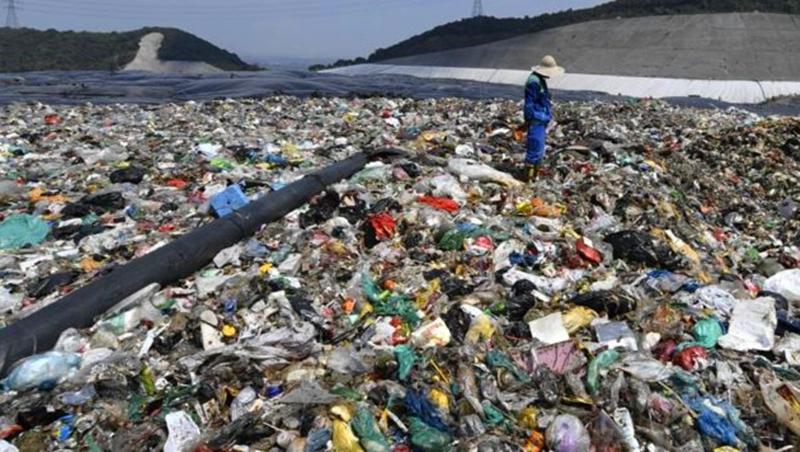
Landfills that do not use geoclay-lined materials
2. The application of geosynthetic clay liners in landfills plays an important role:
Penetration control and anti-seepage function: As a lining material, geosynthetic clay liner has excellent penetration control and anti-seepage function, which can effectively prevent harmful substances in waste from seeping into the soil and groundwater, thereby reducing groundwater and soil pollution.
Increased landfill capacity: Effective barrier materials allow landfills to operate more closely and efficiently. By reducing waste leakage, landfills can use available space more efficiently and extend their useful lives.
Reduce environmental remediation costs: Effective liner materials help reduce the negative impact of landfills on the surrounding environment, reducing possible environmental remediation and subsequent treatment costs. This helps avoid possible future legal action and environmental fines.
Enhance the sustainability of the landfill: The use of high-quality liner materials improves the environmental protection level of the landfill, reduces the adverse impact on the surrounding environment, and is conducive to the sustainable operation and long-term development of the landfill.
Therefore, the application of geosynthetic clay liners in landfills has important economic value in improving the environmental protection level of landfills, reducing environmental pollution, increasing landfill capacity, and reducing future environmental remediation costs. It is currently a necessary geosynthetic material in urban landfills across the country. The clay lining material of Haoyang Environment is of good quality and is a suitable landfill lining material.
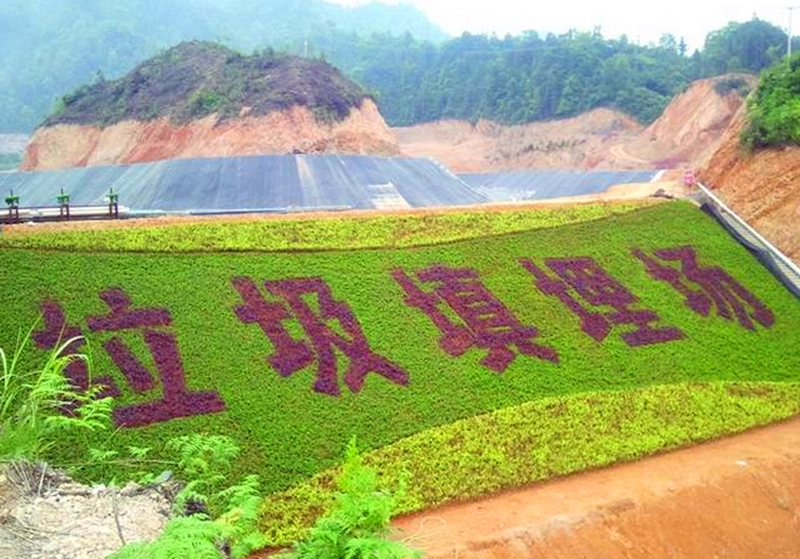
Landfill using geotextile clay lining material and greening treatment
3. The production of geosynthetic clay liners usually includes the following steps:
Raw material preparation: Production begins with the preparation of raw materials. These raw materials often include clay minerals, polymers and other additives. These raw materials need to be mixed in certain proportions to ensure that the final product has the required physical properties and impermeability properties.
Mixing and extrusion: The mixed ingredients are fed into an extruder or extruder. In this step, the raw materials are treated with high pressure and temperature, mixed and extruded to form a uniform geosynthetic clay film or liner.
Forming and Cutting: The extruded material is fed into forming equipment to form the desired pad shape and thickness. These liners may be cut and trimmed at this stage to suit different applications and size requirements.
Quality inspection: During the production process, it is crucial to conduct quality inspection of the pads. This includes testing the material’s physical properties, dimensions and impermeability to ensure the product meets expected standards and specifications.
Packaging and shipment: After completing the quality inspection, the geosynthetic clay liner is packed and ready for shipment. Packaging is usually selected based on the size and purpose of the pad, as well as ensuring that its performance and quality are maintained during transportation and storage.
This kind of geotechnical clay liner from Haoyang Environment has a wide range of applications in landfills, environmental protection, civil engineering and water conservancy projects.
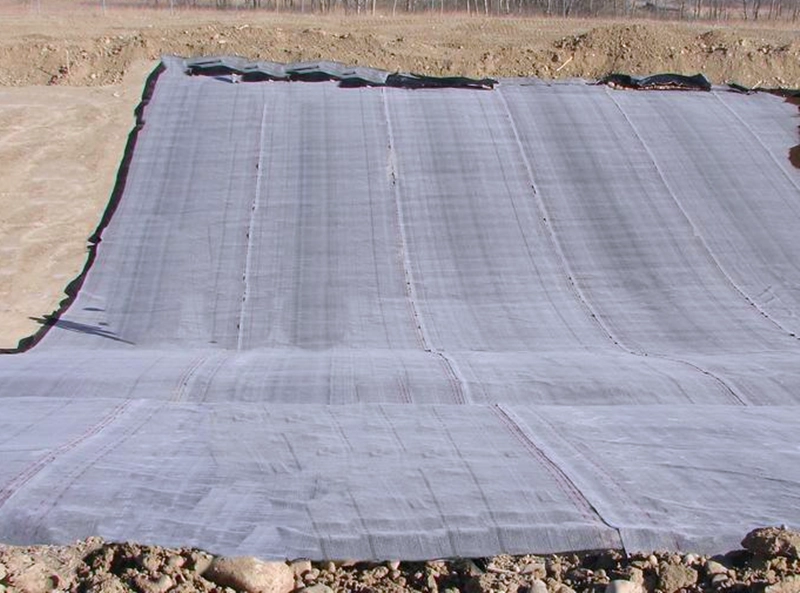
Landfill Subbase Using Geotextile Clay Liner Material

Landfill capping using filament or short-filament nonwoven geotextiles
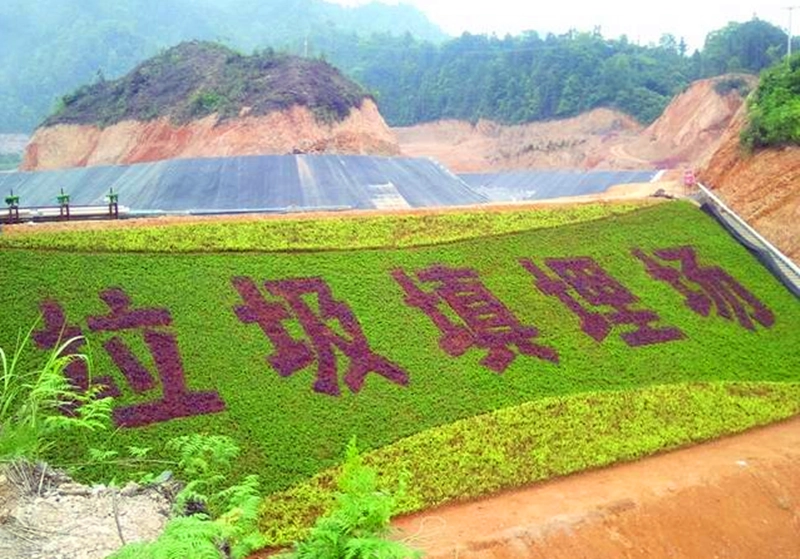
Green treatment of landfills using geosynthetic materials
4. What are the specifications of geosynthetic clay liner?
Geosynthetic clay liner specifications can vary based on different manufacturers and project needs, but common specifications include:
Thickness: The thickness of geosynthetic clay liner usually varies from a few millimeters to several centimeters. Common thicknesses are 3mm, 4mm, 5mm, 6mm, 8mm, etc., and may be thicker or thinner.
Haoyang Environment's geotechnical clay liners are mainly available in 3mm, 4mm, and 5mm thicknesses, and can be thickened according to customer needs.
Width and Length: Pad width and length vary depending on the manufacturer and project needs and can be several meters or more.
Permeability coefficient: The permeability coefficient of geosynthetic clay liner is an indicator of its anti-seepage performance. There may be different grades and standards according to different requirements and project needs.
Quality and Strength: The quality and strength parameters of a liner, such as tensile strength and tear strength, are also important criteria for measuring its performance and will vary depending on project needs.
Color and surface characteristics: Geosynthetic clay liners are usually black or other colors, and the surface may be flat or textured, with uneven features.
5. Purchasing synthetic geoclay liners directly from the factory has many benefits:
Price advantage: Buying directly from the factory usually results in a more competitive price. Cutting out the middleman reduces costs and gives you better prices.
Customization and Flexibility: Factories can often provide customization services, customizing synthetic geoclay liners in different specifications and sizes according to customer needs and to meet specific project requirements.
Quality Assurance: Buying directly from the production factory can more directly understand the quality of the product and the production process. You can gain a more complete understanding of a product's materials, processes, and quality control.
Direct communication and technical support: Direct communication with the manufacturer can provide more timely and professional technical support and services. Manufacturers can provide more in-depth product knowledge and advice, as well as answer your questions.
Fast delivery: Since the product is shipped directly from the factory, it can save delivery time and ensure timely supply, which is especially beneficial when the project is urgently needed.
Traceability: Buying directly from the factory makes it easier to trace the origin and production process of the product, ensuring that the product meets standards and quality requirements.
Therefore, purchasing synthetic geoclay liners direct from the factory provides you with a higher quality, more economical, and more flexible option, as well as better service and support. Haoyang Environment has its own independent production workshop, which can produce according to the different needs of customers; the price also has a great advantage.
6.Company Profile
Haoyang Environmental Co., Ltd. (Haoyang) was established in June 2008 and is located in Dezhou (Yucheng) National High-tech Industrial Development Zone, Shandong Province. The company is a high-tech comprehensive service provider integrating geosynthetic material research and development and manufacturing, environmental protection engineering consulting, design, construction, soil remediation, environmental management and solid waste comprehensive treatment and disposal investment and operation.
Haoyang Environment has passed ISO9001 quality management system, ISO14001 environmental management system, OHSAS 18001 occupational health and safety management system certification, and CQC environmental product certification.
The company has passed the national laboratory accreditation and has been recognized as "Shandong Enterprise Technology Center" and "New Environmentally Friendly Material Engineering Laboratory". It has a professional technical research and development team focusing on environmental engineering design, consulting, environmental protection engineering material research and development, and environmental pollution. R&D and application of management and hazardous waste treatment and disposal technologies. The company has three invention patents, 32 utility model patents and two provincial-level scientific and technological achievement appraisals. It is a national "high-tech enterprise", a "member unit of the International Geosynthetics Association", and a "director unit of the China Geosynthetics Engineering Association". Haoyang Environment has more than 20 modern environmentally friendly engineering material production lines, including a 10-meter-wide blown geomembrane production line, a twin-screw filament geotextile production line, a high-strength reinforced geomembrane production line, and a high-strength composite geotextile production line.
Production line, ultra-wide woven geotextile production line. Products include HDPE geomembranes, composite geomembranes, polyester spunbond filament geotextiles, high-strength woven geotextiles, short fiber geotextiles, three-dimensional composite drainage nets, bentonite waterproof blankets, single- and two-way geogrids, etc., which are waterproof and anti-seepage , new environmentally friendly engineering materials with functions of reinforcement, isolation and filtration.
Haoyang Environment has participated in the construction of key national water conservancy and transportation projects such as the Middle Route of the South-to-North Water Diversion Project, the Three Rivers Management Project, the Great-Western Railway, and the Central-South Corridor. Products are widely used in many environmental engineering fields such as water conservancy, transportation, urban domestic waste treatment, industrial tailings ponds, and environmental pollution control. Haoyang is committed to becoming an international comprehensive service provider of environmental protection technology.
For detailed information about Haoyang Environmental Co., Ltd., please refer to the following link.
http://en.haoyanghuanjing.com/
7. Geosynthetic clay liner life:
In general, the service life of geosynthetic clay liners (GCLs) in landfills usually depends on a variety of factors, such as landfill waste type, environmental conditions, clay liner quality, etc. Generally speaking, high-quality GCLs can last for decades or longer in landfills. However, due to the complexity of the landfill environment and the impact of landfill waste on GCLs, their lifespan may also be shortened. Therefore, actual service life may vary depending on the specific circumstances of the landfill. Regular inspection, maintenance and proper management of GCLs can extend their useful life in landfills.
8. Installation steps of geosynthetic clay liners (GCLs) in landfills:
(1) Cleaning and leveling the ground surface: Before installing GCLs, the landfill surface needs to be cleaned, debris and sharp objects removed, and the ground surface leveled.
(2) Laying GCLs: GCLs will be laid on the surface of the landfill site to cover the landfill waste. GCLs are usually supplied in rolls, and workers will transport the GCLs roll by roll to a designated location and then spread them out.
(3) Overlap and seam treatment: There will be overlap between GCLs rolls, and the seams require special attention. Seam treatment usually involves joining according to the manufacturer's instructions. Common methods are to treat the seams by extrusion, heat welding or chemical bonding to ensure impermeability.
(4) Fixation and protection: After installation, GCLs need to be fixed to prevent them from moving. This may involve additional layers covering the landfill or edge-fixed material. To prevent damage, GCLs are also covered with a protective layer, such as geotextile or other covering materials.
(5) Inspection and testing: After installation is completed, GCLs will be inspected and tested to ensure their anti-seepage performance. This includes checking the integrity and tightness of the joints and may conduct tests such as penetration testing to verify their performance.
These steps may vary depending on the specific conditions of the landfill, the type of GCLs and the manufacturer's recommendations. Proper installation and maintenance of GCLs is critical to the environmental protection of landfills.
9. Things to note when using geosynthetic clay liners (GCLs):
(1) Construction environment: Before installing GCLs, it is necessary to ensure that the construction environment is clean and flat, and there are no sharp objects or sharp objects that may damage the GCLs.
(2) Construction temperature: There may be temperature limit requirements for GCLs during the construction process. Too high or too low temperature may affect the performance of GCLs.
(3) Seam treatment: Seam treatment is crucial to the anti-seepage performance of GCLs. Seams must be properly prepared in accordance with the instructions provided by the manufacturer.
(4) Protective layer: The surface of GCLs needs to be covered with a protective layer to prevent it from being damaged, which may require a specific type of geofabric or other covering material.
(5) Quality control: GCLs require strict quality control before and during installation to ensure their performance and integrity.
(6) Monitoring and maintenance: Regular monitoring and maintenance are required after installation to ensure that the performance and functionality of GCLs are not compromised. This may include regularly checking the integrity of the joints and performing necessary maintenance work.
Following the guidance and recommendations provided by the manufacturer, as well as regular monitoring and maintenance, can maximize the anti-seepage effect of GCLs and ensure their effectiveness in applications such as landfills.
10. Haoyang Environment’s geosynthetic clay liner (GCL) landfill has the following advantages when used:
(1) Excellent sealing performance: Haoyang Environment’s GCLs have excellent hydraulic conductivity reduction capabilities and serve as an effective barrier to prevent the flow of liquids in the landfill. This helps store leachate and prevent groundwater contamination.
(2) Easy installation: Compared with traditional compacted clay liners, Haoyang Environment’s GCLs are relatively easy to install. They are supplied in rolls and can be laid quickly and efficiently on the landfill surface.
(3) High space utilization efficiency: Due to its thin profile, Haoyang Environment’s GCLs have excellent space utilization efficiency and can increase the storage capacity of landfills.
(4) Flexibility and versatility: Haoyang Environment’s GCLs can adapt to uneven surfaces and adapt to different types of landfill configurations, and are suitable for various waste storage structures.
(5) Environmental protection: These liners from Haoyang Environment are usually made of natural sodium bentonite and synthetic materials, which are environmentally friendly and inert, reducing the impact on the surrounding ecosystem.
(6) Durability: When properly installed and maintained, Haoyang Environmental's GCLs are able to demonstrate long-term durability, withstand mechanical stress and maintain their sealing properties.
(7) Cost-effectiveness: Compared with traditional compacted clay liners, Haoyang Environment’s GCLs may save costs in terms of materials and installation, thereby reducing overall landfill construction costs.
These advantages make Haoyang Environment's GCLs the first choice for landfill applications, contributing to effective waste storage and environmental protection.
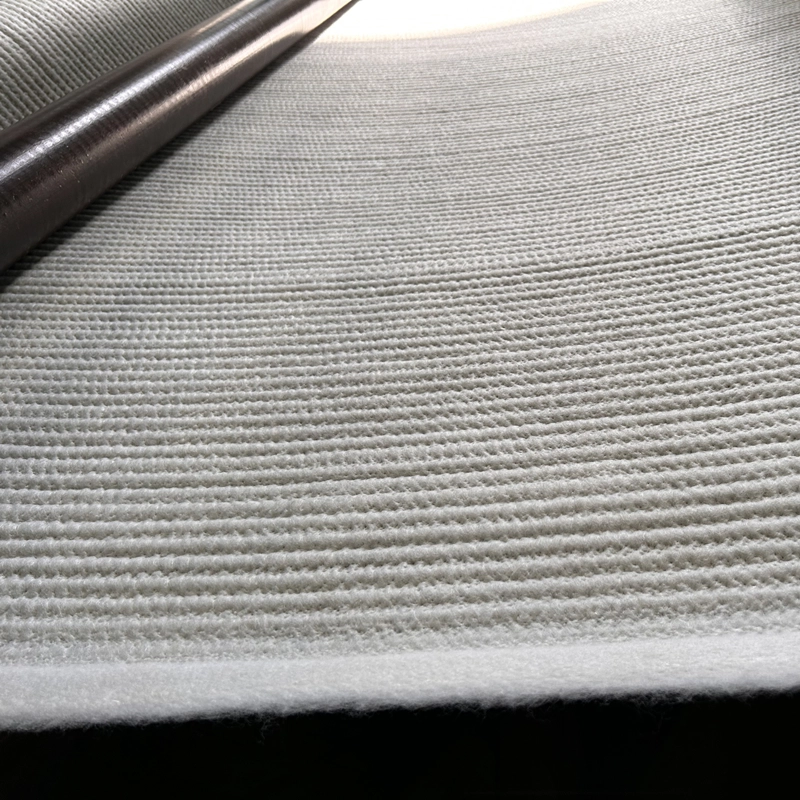
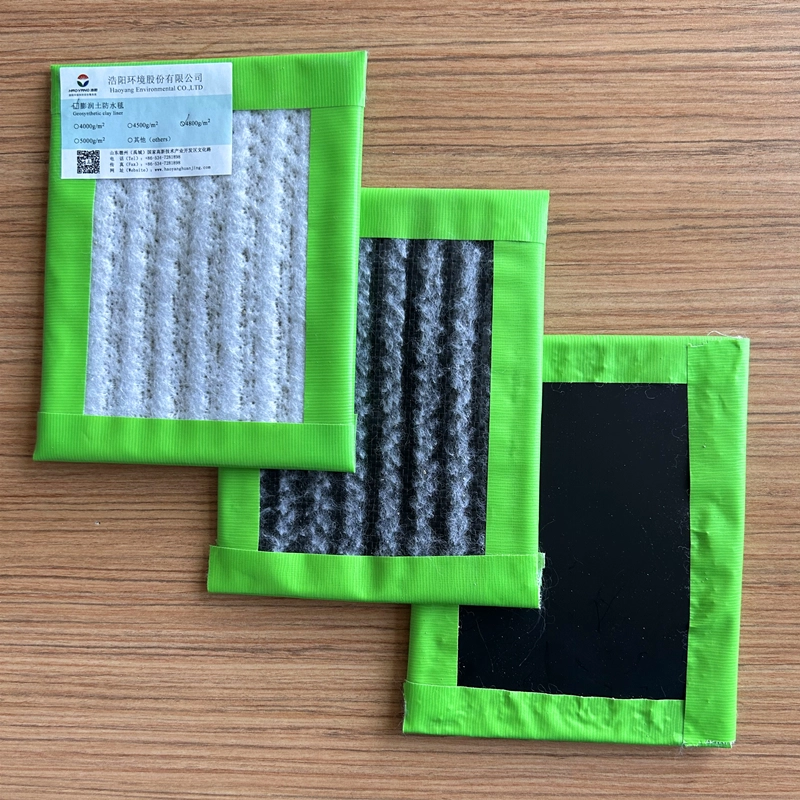

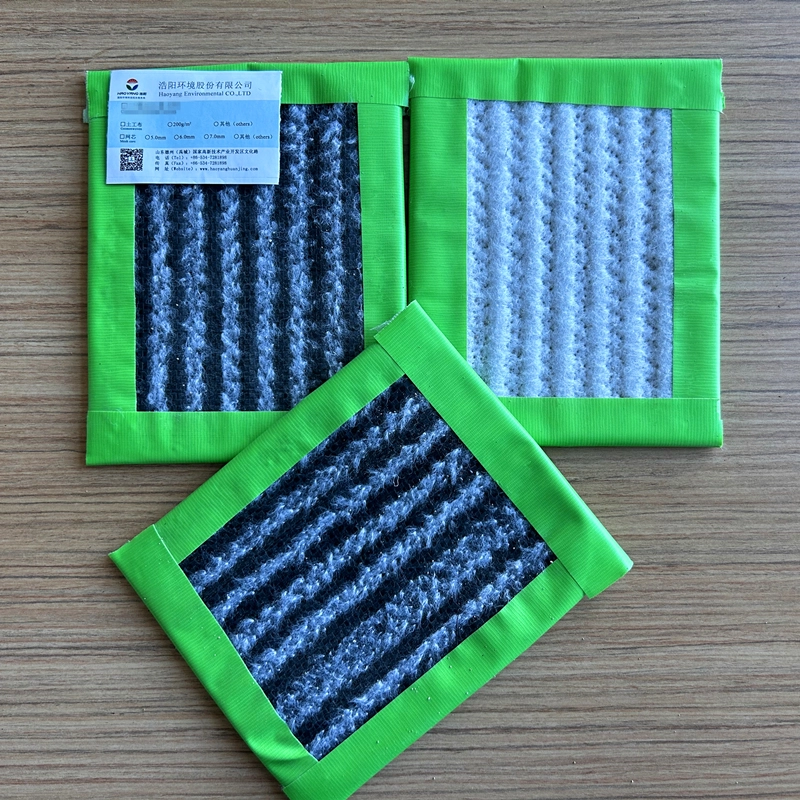
503.webp)
759.webp)

